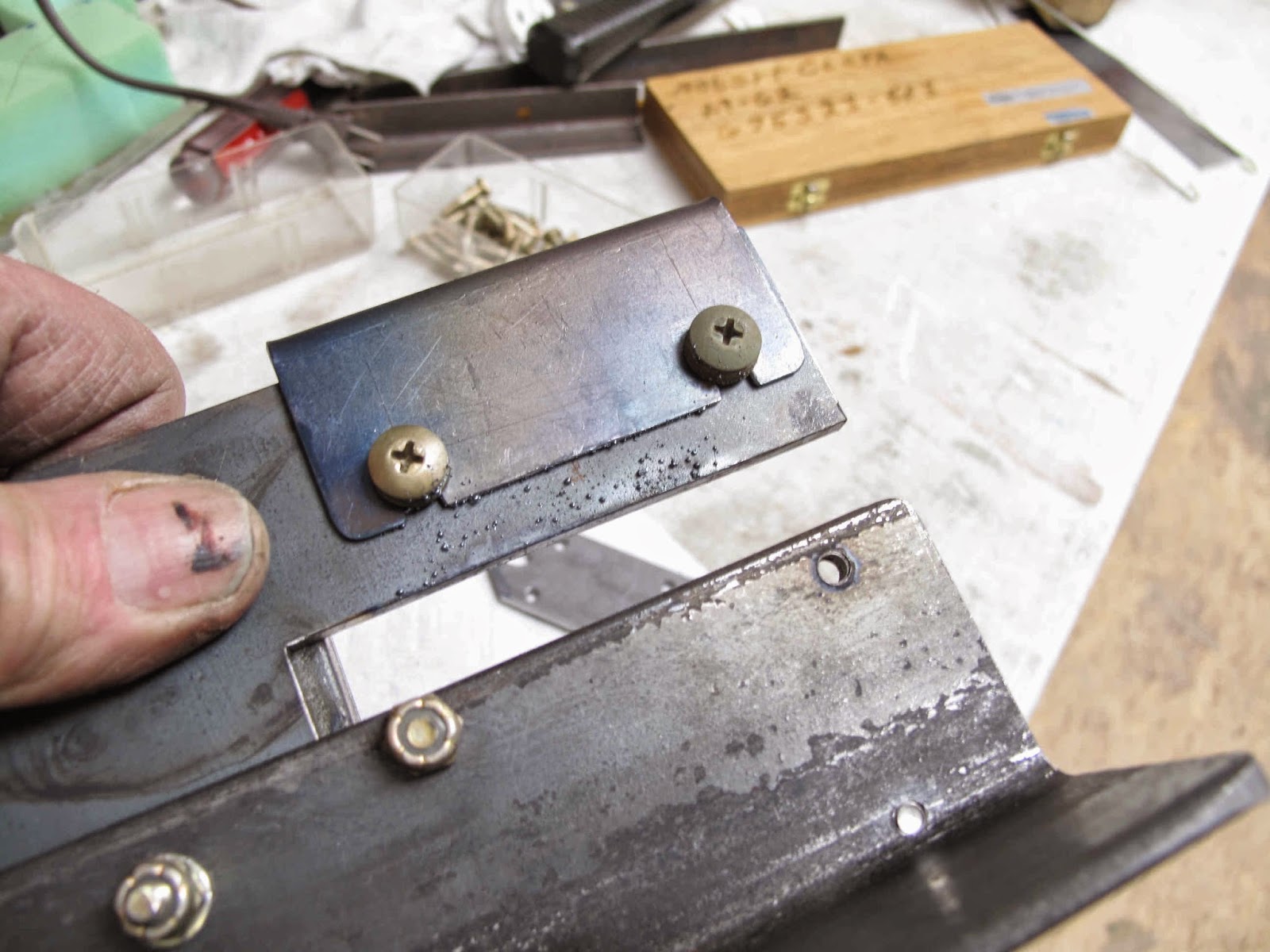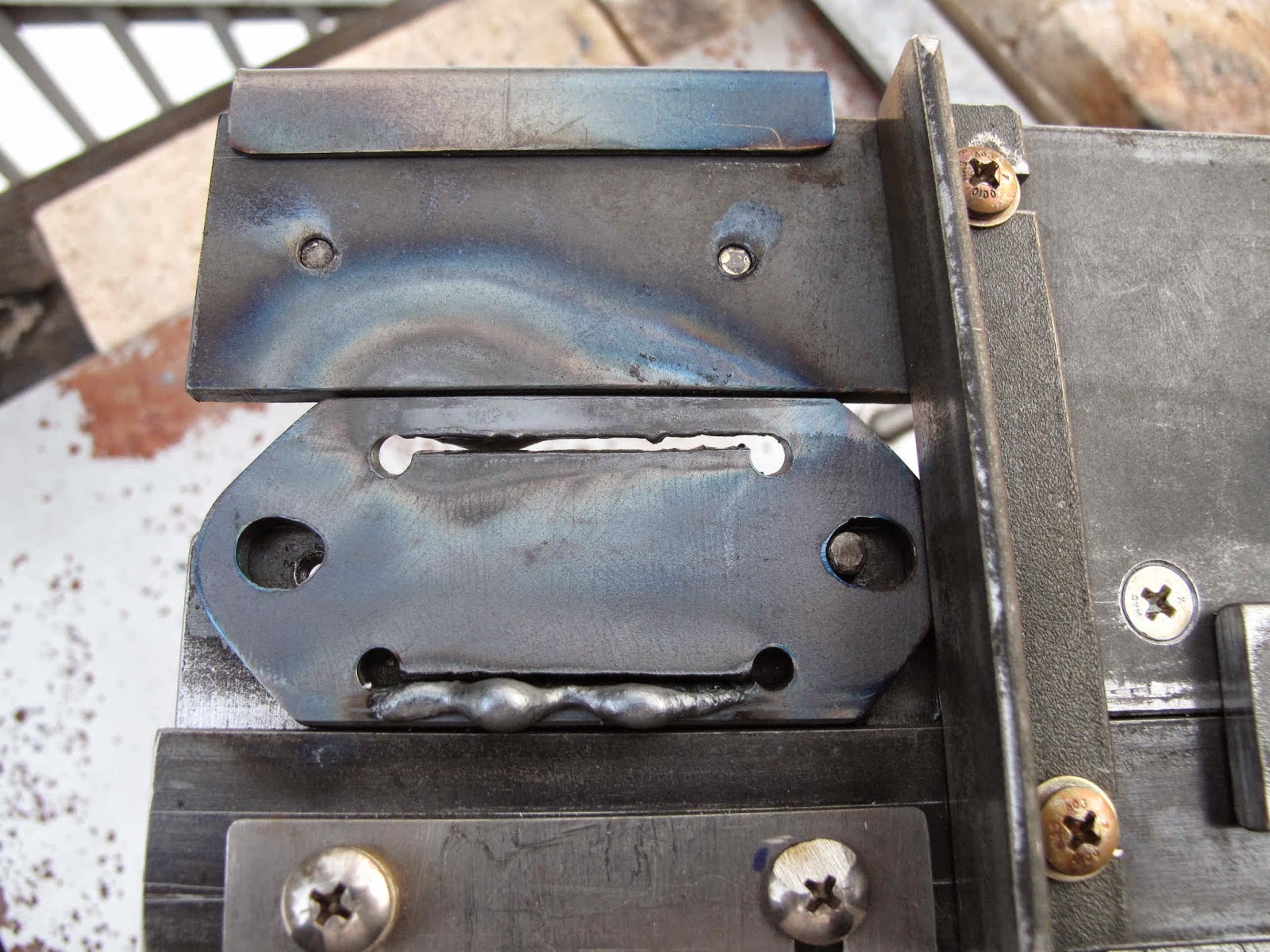This is another project where I had a lot of ideas on how to position the torch to cut the 18 degree angle on the upper and lower edges of the inlet hole in the exhaust flanges. In the end I decided to use the cutting guide which came with the Dillon Torch (now Cobra Torches)and build a fixture to guide the torch. The first issue was the 18 degree angle. The 2 roller guides are independently adjustable so you can set the torch to cut at an angle.
To set the angle I needed a gauge. I drilled a hole the diameter of the copper cutting tip in a piece of plywood and drew a line at 72 degrees to the center line of the tip and 1/16" beyond the end of the tip. With this gauge slipped snugly over the tip it was easy to set the rollers to the 18 degrees needed and maintain the required tip clearance from the steel.
The next problem was how to keep the copper cutting tip perpendicular to the steel in the plane of the cut line. I decided a roller attached to the handle would solve this. I had a roller I plan to use for another project and it was snowing out so with a couple modified U-bolts it's clamped to the handle of the torch so I can still operate the cutting button which turns on the Oxygen.
To position the roller up or down to square up the tip angle you just adjust the nuts in the 4 corned of the roller. To measure the angle of the cutting tip to the roller I made another wood block to slip over the tip and used the square to adjust the height of the roller. It rolls nice and smooth.
To control the line of the cut you a need an edge for the rollers to roll against. I thought one edge would work for the front and rear rollers. I found it all tracks better if there is a guide for the front rollers and one for the handle roller so that the line they follow is perpendicular to the axles of the front rollers.
Some experimenting with clamps and steel showed it was easy to make separate roller guides and to use a piece of angle as a stop for the end of the cut. When the rollers hit the stop just release the Oxygen button and lift the torch. I think it will work.
The widest 3/16 steel I can get locally is 3" so I used a piece of 1" and a piece of 3" to make the base. The 3" piece is screwed to the angle so the roller can smoothly pass over them. The 1" piece is bolted down along with a piece of 1/4" steel which guides the roller. I decided I needed a track for the roller so I used a piece of 1/2" angle for the other side of the track.
I also used the 1/2" angle for the stop for the front guide rollers. For both of the guides I made the bolt holes as slots to allow adjustment.
The 2" angle makes a base for the flange to set on while cutting while leaving clearance for the slag to blow clear. I threaded a bolt into the flange, put a nut on the bottom and cut off the shank to make a locator pin.
You place the flange in the pocket and slide it against the stop. The flange just sets there while you make the cut.
To guide the front rollers straight while making the cut I made some guides from .050" steel. The right hand guide wraps around the base plate because there isn't room on top to mount it. I would have needed a 5" wide piece of steel to have mounted it on top.
On both the left and right guides the screw holes are slotted to allow adjustment. I played around rolling the torch quite a bit before cutting parts to get all the adjustments where I thought they would need to be for this to work, which it does.
Yes that's snow in the background but it's about 50 degrees outside and sunny so it was a great day to cut low carbon steel.
The fixture is in the vise which is on the fire bricks. I placed a piece of steel to catch the slag. The mess from my first experiments with the cutting torch is still stuck to the bricks. Let's face it, it was molten steel as it was blown clear of the steel. I probably could have guessed it would stick to the bricks.
The flange is setting in the fixture ready to cut.
The torch is in the, forward, cut start position.
It's adjusted left to right to cut tangent to the outside of the corner holes.
I found that it cut better if I started in the back, stop position, then without the extra cutting oxygen, slowly move forward to heat the flange. Then pause in the start position until the hole edge starts turning red. Once the hole starts turning red squeeze the oxygen button and start slowly pulling back to the stop position, better a little slow than too fast and loose the cut. When the rollers hit the stop release the button and lift the torch.
Lift the flange out with a pair of pliers, red hot steel, flip it left to right, re-position it and make the next cut.
The slag from the first cut is on top so it doesn't get in the way.
A quick whack with a hammer shears off the slag.
A very clean part with crisp straight cuts. On to the side cuts.




























No comments:
Post a Comment